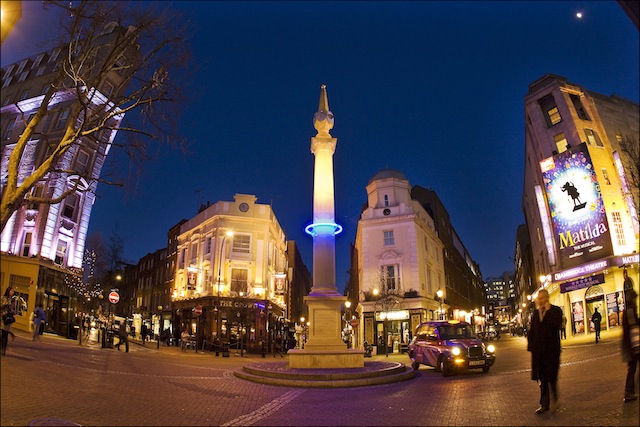Free shipping on orders over £50
TradeHURRY! SPRING SALE Now On! Get 10% Off Using Code KEEP10! Plus FREE SHIPPING On All Orders Over £50!
LED Lights Present Londoners With A Vision Of The Future
 Haloes of blue LED light adorned a number of prominent London landmarks back in 2012, to illustrate the effects that runaway climate change will have on the look of England’s bustling capital city.
Haloes of blue LED light adorned a number of prominent London landmarks back in 2012, to illustrate the effects that runaway climate change will have on the look of England’s bustling capital city.
The installation by world-renowned visual artist Michael Pinsky, with the support of Artsadmin, was entitled Plunge and, for 28 days in 2012, sought to alert Londoners and tourists alike how sea level will have climbed by the year 3012, should we fail to heed the threat of global warming.
As the temperatures climb, they’ll cause the glaciers to melt and sea levels to rise by an incredible 28 metres, completely submerging our treasured landmarks and changing the face of our urban landscape forever.
But this nightmarish vision of the future was also a thing of beauty, and successful on more than just a visual level.
The fact that Pinsky utilised energy-efficient LED lights also presented us with an idea of hope; that we may still be able to avert this tragedy if we take control over our currently profligate energy consumption.
The installation was made all the more hard-hitting as its stunning and meaningful rings of LED light were installed precisely 28 metres above sea level, about our particularly beautiful and cherished icons.
These included the Seven Dials Sundial pillar in the heart of Covent Garden (pictured), the column at Paternoster Square adjoining St Paul’s Cathedral and the London Stock Exchange, and Duke of York’s column overlooking St James’s Park and The Mall, just a stone’s throw from Buckingham Palace.
Judith Knight, co-founder of Artsadmin was in no doubt about the installation’s message when she stated: ‘Plunge is an extreme illustration of what the future might hold but its message is simple – we need to take action against climate change now.’
The Department of Energy and Climate Change’s 2014 Energy and Carbon Saving Case Study stated that since its inception in 2008, the department had slashed its energy consumption by a staggering 42%, and carbon emissions by 38% from 1.93 t/CO² to 0.6 t/CO² per person.
This was accomplished largely by replacing their wasteful fluorescent office tube lights with environmentally friendly T5 and T8 LED Tube Lights, and consolidated upon the impressive 76 tonne reduction they had already achieved simply by switching to LED light in their staircases, lifts and toilets!
They also noticed a significant decrease in their maintenance costs, as well as savings brought about by the LEDs’ increased lifespan, compared to a fluorescent light.
For example a 5 foot T5 LED Tube Light will produce 1200 Lumens of Brightness for just 20W of power, in comparison with the 120W required by an equally bright fluorescent bulb, and a 6W Square Surface Mount LED Panel Light will cost you 1/10th the electricity of a fluorescent and last 50,000 hours, twenty times longer than an incandescent light!

The result of switching to LED lighting was that the department had not only vastly improved its energy-efficiency, but the working environment had become “lighter and brighter” too.
They published this graph as part of the report, and it’s plain to see the positive financial impact of the LED lighting.
You too will be able to make some massive savings in your home and at work, by making the switch to LED lighting and, hopefully, our children’s children’s children in the year 3012 will never have to witness the scenario that Michael Pinsky’s Plunge depicted!






 Search
Search


